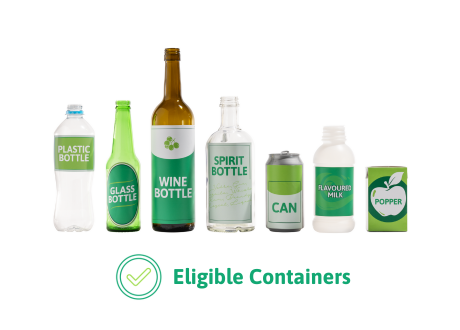Containers for Change
When you recycle with Containers for Change, you get a 10 cent refund for every eligible container you return.
Take your 10c eligible containers to the Containers for Change depot, at the first Stanthorpe industrial estate, 2-6 Walsh Drive, Stanthorpe and quote code C10683974 to donate the proceeds to GBSAN.
We encourage schools & community groups to get involved in collecting eligible containers (e.g. aluminium cans, plastic water bottles). There are a number of environmental benefits of widespread involvement; and there are financial benefits for schools. Behavioural adjustments offer powerful and positive impacts when a simple program encourages children, staff and parents to get involved in a practical way. Containers for Change is the Queensland container refund scheme and was introduced in November 2018. Eligible containers are collected and returned in exchange for 10c per item. Individuals, community groups and schools can participate.
Coordinating an independent program
Schools can run a program independently in a way that suits them and receive all funds earned. A discussion would be tabled at a P&C meeting. Arrange collection facilities and communicate details of the program. All participants in the scheme must register for a scheme ID through www.containersforchange.com.au.
Using a third party
Schools may explore registration with P&Cs Qld Container Refund Scheme, which will handle certain administrative aspects on behalf of the school for a fee.
Things to consider:
Engagement
Effective participation will come from engagement with students, parents and all school staff. Involve students by linking the program activities to the Australian Curriculum through learning areas, general capabilities, and the cross-curriculum priority of sustainability. Consider how the student council or other student groups could be involved. Consider how will you involve parents and seek their support.
Collection
Consider the collection process. Will you collect the containers at school? You can also ask parents to take the containers straight to the depot - just let them know the school ID number.
What will the collection bins look like and how will collection work? Collection bins could include the following: wire cage, wheelie bin, cardboard box, plastic crate, apple crate, tub, mesh laundry basket, laundry hamper on wheels, modified animal cage/enclosure, wooden box, rubbish bin, wool bale bag/frame, unserviceable ICB pod, blue barrel etc.
Quantity/size – How many collection bins will you need? A larger container is emptied less frequently. Will you use one large collection container and then cart the items in smaller tubs or bags to the depot or collect in smaller tubs that can be taken directly to the depot.
Accessibility – Can students and adults reach the collection bin? Do you want the collection bin accessible by the general public? Does it need to be locked? Is it easy to add multiple items? Is it easy to remove items for sorting? How will glass bottles be handled?
Portability – Do you intend to move the collection bin around? Can you take it to events offsite? Is it collapsible enough to fit into a car?
Durability – Can it withstand a strong wind? Is there drainage for rainwater and liquids? Will it withstand harsh sunlight?
Cost – Can students make bins during class? Could a parent donate time or resources to make a collection bin? Can you use an existing container in the first instance? Is there a local business that may want to donate or sponsor a collection bin?
Suitability – A mesh cage offers visibility and it is easy to gauge when it needs to be emptied. A wheelie bin may be confused with a regular bin and may get overlooked.
Safety – Is it a safe option? Consider weight, sharp edges, glass bottles, leaks.
Deposits – how will the items be transferred to the local deposit centre? Items MUST be separated into categories before accepted at the depot. Will this happen onsite or off site? Can students be involved in sorting items and bagging? Is there a parent that can volunteer to take the items to the deposit centre as needed or will the P&C or a school staff person do this?
Celebrate – Keep students and parents motivated by regularly sharing tips and updates on money raised.
Sustainability
Sustainability is at the heart of this initiative. Reusable options will always be more sustainable than single use options. Transitioning to reusable options and encouraging litterless lunches may be a long-term environmental goal worthy of thought. A container program aims to efficiently account for recycling single use items. Consider the use of reusable tools to assist in collection (such as sacks that can be used to transfer items to collection centres, or tubs that can be reused, rather than plastic bags).
Consider other sustainable initiatives and engage students. These might include;
Worm farms, composting, paper recycling, recycling batteries (used in school equipment), auditing (school bins, the staff room and tuck shop processes), banning balloons and straws. Terracycle https://www.terracycle.com/en-AU/about-terracycle/recycle_your_waste offers free recycling options for tricky items and has a reward scheme for schools.
As of 1 November 2023 Wine and Spirit bottles are now accepted.
You can search for charities or schools to support with your containers & donate your containers directly to the Stanthorpe Depot in their name.
Stanthorpe industrial estate, 2-6 Walsh Drive, Stanthorpe
Opening hours
Monday - Friday 9:00am - 5:00pm








